#medium telephoto
Explore tagged Tumblr posts
Text
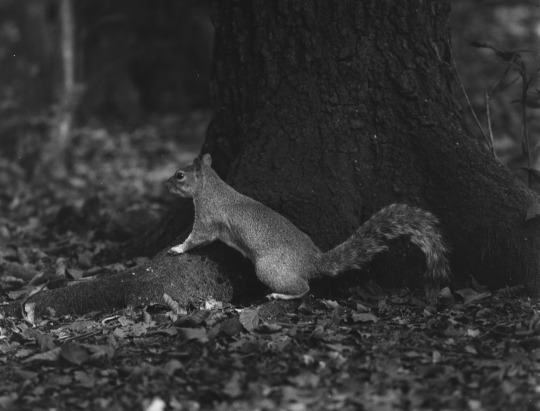
Bronica ETRS with Zenzanon 250mm f5.6 lens, taken on Ilford HP5 and developed with Rodinal
#photography#film photography#ishootfilm#analog photography#filmisnotdead#nature photography#b&w photography#wildlife photography#grey squirrel#telephoto#medium format#120 film#ilford hp5
8 notes
·
View notes
Text
I guess I have to actually go to a physical store to find fucking luster paper. Everything at B&H is just too expensive, I'm not an actual pro. Trying through Amazon is a nightmare. I want a luster (or at least a semi-gloss, yes they feel different to me), not the cheap-ass glossy crap.
Sorry that I took a single photo class, so now I have just enough knowledge to be an ass with minimal actual knowledge.
#my life#i finally got a medium format photo printer#i cant wait to have a enough tucked away for some refurbed full-frame#my mom bought me a TELEPHOTO she found at an estate sale#i have the opportunity to really get back into it#i need a new bag tho#and i guess maybe a simple lighting kit#and definitely a tripod because my light weight has gone missing#anyway....FUCK glossy paper#i also need to recalibrate my screen to match my printer because the prints are a little too dark
0 notes
Text
Because I had headcanon that Color is Autistic and has developed special interests in things such as photography, travel, maybe even things like social advocacy.
Maybe even philosophy and psychology. For now, in this posts, I’ll focus on the big two: photography and traveling. (I will also touch on how Color’s physical disability, chronic fatigue, his autism, and perhaps his ptsd/ separation anxiety from Killer also effect his ability to engage in his interests in another post.)
I think he’d develop some decent if not above average technical knowledge, such as camera types and functions. Detailed understanding of different types of cameras (DSLR, mirrorless, point-and-shoot, medium format, etc.) and their specific functions.
Knowledge about various lenses (prime, zoom, wide-angle, telephoto, macro) and their applications. Mastery of camera settings like ISO, aperture, shutter speed, and how to manipulate them for different lighting conditions and artistic effects.
In-depth understanding of how aperture, shutter speed, and ISO interact to create a properly exposed photograph. Proficiency in using software like Adobe Lightroom, Photoshop, or other photo editing tools for post-processing and enhancing images.
He’d learn about artistic elements such as composition techniques, lighten and color theory. Develop a familiarity with compositional rules like the rule of thirds, leading lines, framing, symmetry, and how to creatively break these rules.
Knowledge about natural and artificial lighting, how to use light to create mood and depth, and techniques like backlighting, side lighting, and using reflectors. Understanding of how colors interact, complementary colors, and how to use color to convey emotion and direct viewer attention.
Awareness of different photography styles (portrait, landscape, macro, street, documentary, astrophotography, etc.) and genres, and what makes each unique.
Knowledge about influential photographers and their work, such as Ansel Adams, Henri Cartier-Bresson, Annie Leibovitz, and contemporary photographers.
Understanding the evolution of photography, from daguerreotypes to digital photography, and significant milestones in the field. Awareness of current trends in photography, popular styles, and emerging technologies.
And, of course, he’d develop and grow practical experiences and hands on practice. Experience with on-location shoots, managing different weather conditions, and adapting to various shooting environments.
Knowledge about how to properly maintain and clean camera equipment to ensure longevity and optimal performance. Skills in troubleshooting common issues like lens flare, sensor dust, or focus problems.
He’d have a deep enthusiasm for specific techniques or subjects he enjoys photographing, whichever or whatever you all think those could be exactly.
Likely to have personal photography projects, well-organized portfolios, and possibly an online presence showcasing their work. Extensive collection of books, articles, videos, and tutorials related to photography.
A special interest in traveling, in addition to photography, would manifest in the character in several ways, showcasing their passion and extensive knowledge about various aspects of travel. Here are some specific aspects:
For his interest in travel, he’d be very well versed in the planning and research process. Color might create comprehensive travel itineraries, meticulously planning each day's activities, routes, and schedules.
He might gradually develop an extensive knowledge about various travel destinations, including historical sites, natural landmarks, cultural attractions, and lesser-known gems.
He’d display a proficiency in booking flights, accommodations, and transportation, as well as understanding visa requirements, travel insurance, and local regulations.
An expertise in packing efficiently, knowing what to bring for different climates and activities, and how to pack photography gear safely for travel. Color is likely to show a very deep and profound appreciation for different cultures, learning basic phrases or even fluency in multiple languages to better communicate while traveling.
He’d definitely show a deep interest in trying and understanding local cuisines, knowing popular dishes, and even recipes from various regions. He’d have at least some knowledge about local customs, traditions, festivals, and etiquette to respect and immerse themselves in different cultures.
He’d certainly develop some geographical and historical knowledge, with a detailed understanding of world geography, maps, and the ability to navigate using traditional maps as well as digital tools.
Knowledge about the history of the places he visits, including significant events, historical figures, and the cultural evolution of the region.
He might maintain detailed travel logs or journals documenting his experiences, including photos, notes, and personal reflections. He’d definitely collect souvenirs, postcards, or other memorabilia from his travels; often gifting them to beloved friends.
He’d probably engage with travel communities, forums, and social media groups to share experiences and gain insights.
This special interest would possibly lead to him gaining a lot of practical skills, such as in budget management. Expertise in budgeting for travel, finding deals, and managing expenses effectively.
He might display an ability to adapt to different environments, handle unexpected situations, and problem-solve while on the go.
Although it’d probably be harder for him than most, particularly if he has a harder time handling and dealing with change—especially if the change is unexpected and unplanned.
Knowledge about staying healthy while traveling, such as understanding local healthcare options, vaccinations, and travel safety tips.
He’d like combine both interests by using his photography skills to capture stunning images of the places he visits, creating travel blogs or photo albums to document his journeys.
He might create photo essays or visual stories that capture the essence of the cultures and places he explores. Share his travel experiences and recommendations with others, possibly through writing travel guides, blogs, or social media content.
All this is to say that Killer would definitely encourage Color to come with him to explore abandoned places and ghost towns, and Color’s going to be so overjoyed he starts hand flapping. He’s going to take so many pictures, he’s going to remember it forever.
#utmv headcanons#utmv hc#killer sans#utmv#sans au#sans aus#killer!sans#killertale#othertale#othertale sans#other sans#color!sans#colour sans#color spectrum duo#colorkiller#undertale#undertale au#undertale aus#utmv au#autistic headcanon#special interest#undertale something new#undertalesomethingnew#something new#something new sans#something new au#killertale sans#canon disabled character#bad sanses#bad sans gang
36 notes
·
View notes
Text
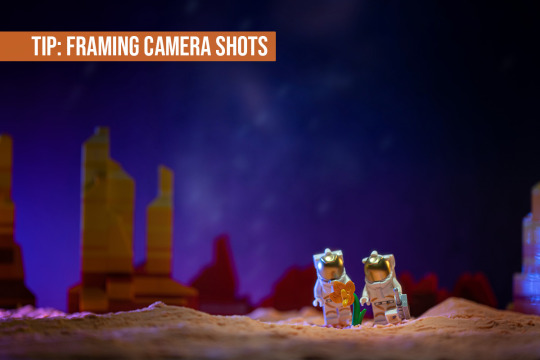
📖TIPS: Framing Camera Shots - Overview
When it comes to photography, there are a variety of shots a photographer can take that help you tell a story for your viewer. Many of the terms I’ll be using this month originate in film-making, which I learned in various courses in art school like storyboarding and film history, and are equally relevant to toy photography.
A CAMERA SHOT size refers to what elements are included in your photo within the outside edge (called the FRAME) of your photo. It can also refer to the purpose of the photo.
Some of the most common framing camera shots are:
Extreme Wide Shot
Wide Shot
Full Shot
Medium Wide Shot
Medium Shot
Medium Close Up
Close Up
Extreme Close Up
Some camera shots that refer to the purpose used:
Establishing Shot
Detail Shot
Reaction shot
POV Shot
…And many more!
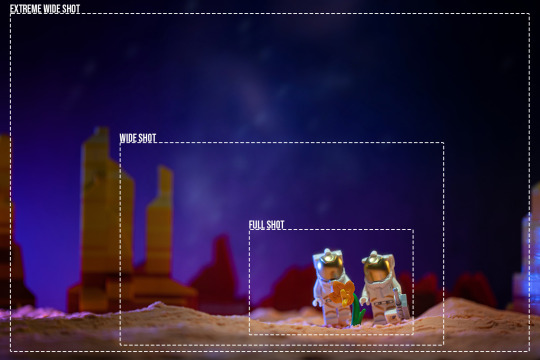
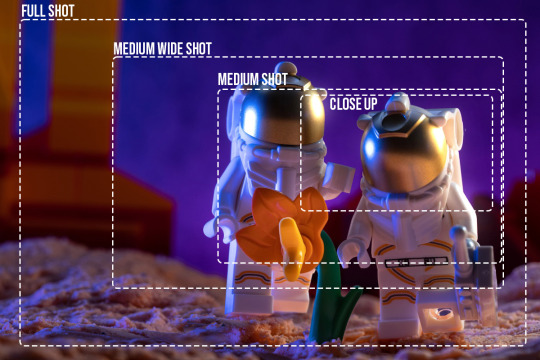
The use of multiple of these different shots for your photography will create variety and interest between photos. It's also great for maximizing the photography you can create with one set/build. Personally, I find that by shooting both wider and up close, I save time by setting up a scene once and getting multiple shots out of it.
This month’s tips will touch on subjects from previous Tips. In 2020, foolishbricks (IG) did a brief overview of some of the different camera shots in his 📖TIPS: Anatomy of an Image, and nocturnelle9 (IG) had tips on camera lenses and focal lengths in her 📖TIPS: Wide angle vs Telephoto. In 2022 @minifiglifescenes wrote a series on camera angles in 📖TIPS: Using Camera Angles.
I’ll return next week to go over Wide Shots. Thanks for reading!
~@glowingbrickette, Moderator
>Overview Wide Shot Full and Medium Shots Close Up Shot
88 notes
·
View notes
Text
No. 43 - Porter Airlines
I consider myself very lucky to live near enough to an airport, located directly beneath one of the main departure paths, that I can regularly see airplanes flying overhead on their way off to wherever. Depending on the plane, they can pass over my house as low as 3,000 feet! ...which is still way too high for my phone's camera! So while I can see the plane decently, even make out details of the livery, what my camera sees is...this.
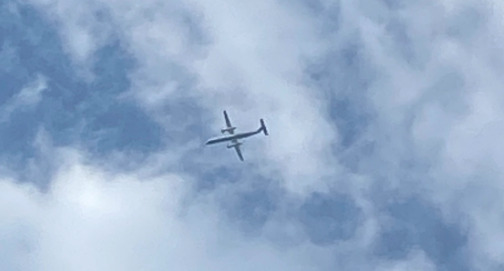
Okay, so my planespotting hobby mostly consists of literally spotting them (I am very good at this part! It's the photography that I struggle with!) because I'm unable to shell out for a telephoto lens, but thanks to the magic of flight tracking software I'm able to identify the exact airplane that this is, rather than being forced to base my review off this crunchy "photograph".
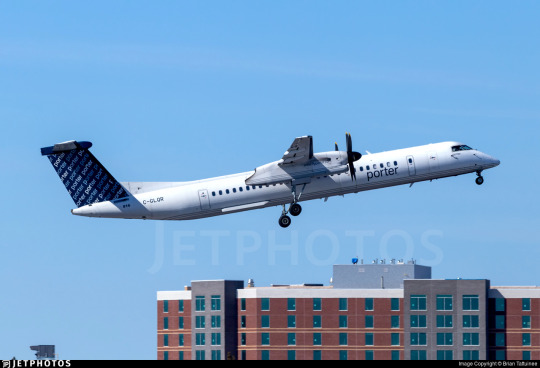
So, I'd like to introduce you all to our subject for today, C-GLQR! And, by extension, Porter Airlines - requested by @fungaloids, plus an anon.
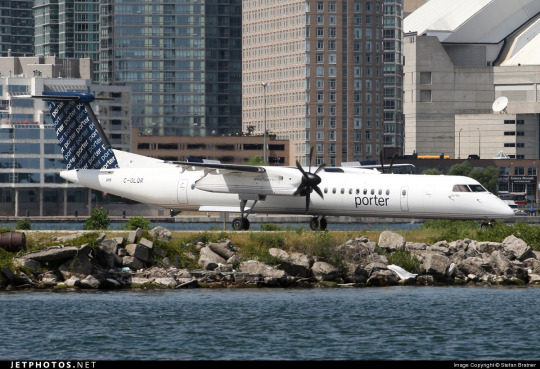
First flown in February of 2009 and delivered in December of the same year, C-GLQR has served her entire fourteen-year career with Porter Airlines. She's actually only slightly younger than the airline itself. Porter was founded in 2006, featuring executives who formerly served in similarly high positions in Canadian regional airlines Air Ontario and Canada 3000, American Airlines, and...apparently the former US ambassador to Canada for some reason. They're about as large as you can get while still more or less being a regional airline, and they fly a fleet I'd call medium-sized of Embraer E195-E2 jets and an even larger number of Bombardier Dash 8-Q400 turboprop planes, like the pictured C-GLQR, out of their hub in Toronto.
One interesting thing about Porter (inconsistently stylized as lowercase-p porter, but it lacks the clear intent of something like condor so I'm not going as far as to write it that way myself) is said hub. See, when I say Toronto, you probably think of the worst airport in the entire world, Toronto Lester B. Pearson International Airport. Thankfully for Porter's customers they do not have to go to the labyrinth of human misery which is Toronto Pearson, and are instead corralled into Billy Bishop Toronto City Airport, colloquially known as Toronto Island Airport, potentially because it's changed its name twice and the local population got sick of remembering what it's calling itself now.
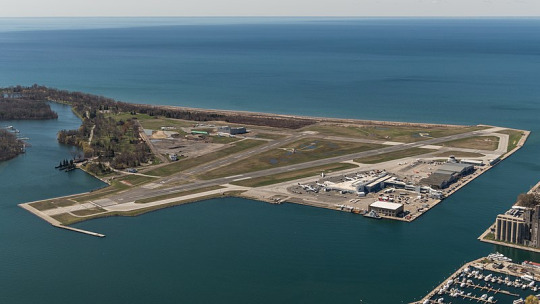
image: DXR
The 'island' designator is quite literal. This is a teeny tiny airport, just barely large enough to land the Q400 and definitely too small to land jets. The fact that Porter flies to Chicago-Midway, Washington-Dulles, and Boston-Logan is a testament to the Q400's absolutely wild range rather than an indication that this tiny scrap of land is in any meaningful way an international airport. It has two runways and both are shorter than the ones at the smallest airport I've ever flown into that had an actual terminal, Vieques. I'm surprised they can operate a Q400 there. In fact, they can't - they had to pick a seat configuration smaller than the standard in order to be able to use the runways at Billy Bishop. (Incidentally, this means their seats have a more generous pitch, so I suppose that's a point for them.)
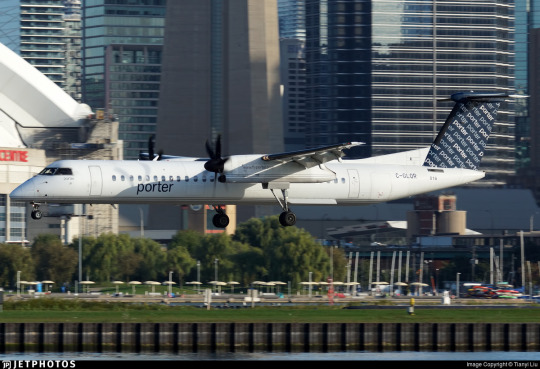
So why would they want to put the biggest passenger turboprop in service in the West onto this tiny airstrip? Well, Porter's...reason for existing, so it seems, is to force the Toronto Port Authority to expand the airport and build a bridge to the mainland despite the fact that nobody who lives in the area wants this. Hilariously, they have been entirely unsuccessful in this venture and now operate a second hub in Pearson. That's where they put the jets - after all, if you tried to land an E195-E2 at Toronto Island you would have a very wet plane and some very mad passengers on your hands very quickly.
youtube
I mean, to be fair, getting to not go to Pearson is a selling point.

I don't have any other place to put this but they have an adorable raccoon mascot named Mr. Porter. I'm not sure why a raccoon, but I like him. He doesn't appear on the livery at all - heaven forbid we do something interesting - but he's there and he's cute. I do have to point out, though, that this is one of the worst names for SEO I've seen in a while, given Mr. Porter is the name of the men's department of extremely popular luxury fashion outlet shop Net-a-Porter.
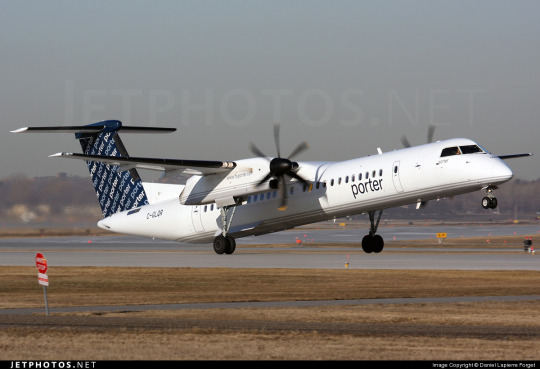
I think raccoons could be a pretty nice source of inspiration for a livery, what with their colorblocking and stripes. You could even make the planes' engine cowlings look like weirdly human little hands. I would hate that, but I would respect it! Instead Porter has taken the approach of making the plane mostly white. Revolutionary for sure.

I'll begin with the good and say that I really like this grey underside with its little outlines - I think this is an absolutely brilliant design for the Dash 8. Unlike the ATR series, which I've talked about a fair few times before on this blog, the Q400 is about as angular as a plane can get. I've never touched on that shape before, but I've discussed how carriers, though I'm sure it's by accident and they never consider this, work with the shape of the ATR to good effect. The curvaceousness of the ventral fairing on the ATR is complemented by long swoops like the ones used by Azul, IndiGo, and Air Astra. The Q400, in contrast, stores its landing gear in the engine cowlings, allowing for a very flat belly and uninterrupted fuselage that looks best with sharp long lines and blocky geometric shapes. If this livery had any other details, this would be such a nice touch - they even hammer the point in with the same design on the bottom of the cowlings.
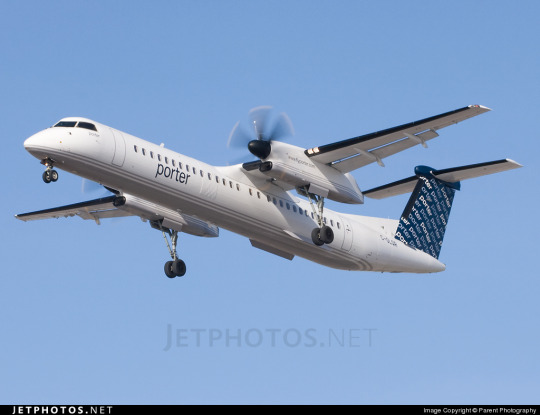
Unfortunately, it's so light-colored that it's difficult to notice. You could mistake it for shadows settling on natural grooves in the airframe if you didn't know what the bottom of a Q400 is supposed to look like, and it isn't as if you can see it when the plane is parked.

You may well not see the wordmark, either. While the sans-serif font chosen is almost gratingly boring it is at least not hideous, but it's located in such an out-of-the-way location it almost feels like they're ashamed of it. It's so needlessly far back and low-sitting that the wing blocks it from half the possible angles, and it's not like it's accentuated in any way. You could so easily miss it. This wordmark is honestly Lufthansa-tier.

Another thing I don't like is the use of the tail. It's blocked out very Detached Tail Syndrome style, refusing to engage with the large block leading from it to the fuselage. I would understand, though not approve, if this was because they didn't want to redesign the balance of the tail when applying the livery to a new style of plane, but the Q400 is what they started with! The livery was designed for this plane and it seems to want you to just not notice this significant chunk of fuselage! It makes the whole airframe look so desolate and empty. The kindest thing I can say for it is that it looks lazy, but really it looks more unfinished. I just struggle to understand why these choices were made, in all honesty. Surely this isn't the best you can do.

Right, right, okay. There's something I've been dancing around on purpose and I think it's obvious what it is. I just wanted to get in an entire review first because there's sort of no going back once I've mentioned it. Everything I said before, while very important, is subordinate to this one...utterly perplexing choice which turns failure to infamy.

PORTER PORTER PORTER PORTER PORTER PORTER PORTER PORTER PORTER PORTER PORTER PORTER PORTER PORTER PORTER PORTER PORTER PORTER PORTER PORTER PORTER PORTER PORTER PORTER PORTER PORTER PORTER PORTER PORTER PORTER PORTER PORTER PORTER PORTER PORTER PORTER PORTER PORTER PORTER PORTER PORTER PORTER PORTER PORTER PORTER PORTER PORTER PORTER PORTER PORTER PORTER PORTER PORTER PORTER PORTER PORTER PORTER PORTER PORTER PORTER
Grade: Z-
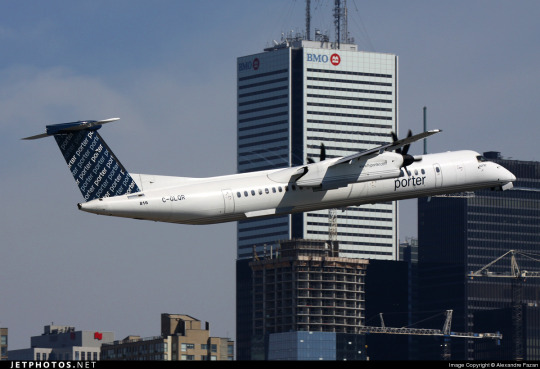
#tarmac fashion week#era: 2000s#era: 2010s#era: 2020s#grade: z-#region: north america#region: canada#regional airlines#porter airlines
27 notes
·
View notes
Note
Hey Micheal what camera would you reccomend to some one starting out taking photos & what’s your set up?
Hey!
I'm a firm believer in buying an inexpensive DSLR or mirrorless setup with interchangeable lenses. You don't have to break the bank on a starter setup — just focus on buying a camera with a robust selection of first- and third-party lenses.
My usual advice is to start simple and only upgrade gear once you run into a physical or technical limitation that stops you from realizing your vision. For example, if you're not getting the shallow depth of field you want with your current lens and body, then maybe it's time to consider buying a lens with a larger maximum aperture (e.g., f/1.8 or f/1.4).
I started out with a Nikon D50 and a Nikkor 50mm f/1.8. That served me well for nearly five years, before I started running into technical limitations with the sensor that made shooting night photos difficult. That's when I switched to shooting medium format film for a spell, before ultimately settling on a full-frame Canon digital body. All-in-all, that experimentation period took about 17 years (I'm still not done).
That said, shop used for your first camera. Places like KEH or MPB have a great selection of tested and used gear. I personally shop from MPB. Here are a few great beginner full-frame camera bodies. I'll break out lenses later on in this post.
Why full frame? I think you get superior image quality, better depth of field, better image resolution for printing, and phenomenal dynamic range.
Canon EOS 5D Mark III ($714)
Nikon D750 ($774)
Canon 6D Mark II ($884)
Nikon D810 ($819)
Anyone of these are going to get the job done and then some.
The world of lenses is complicated and varied. You'll have “prime purists” that will tell you to eschew zoom lenses and only shoot prime (a lens with no zoom capabilities). You'll have people that say longer telephotos are all you need. The truth is, you'll find your niche the more you shoot. I prefer prime lenses for their simplicity (and the less I have to think about, the better).
I'll break these out by purpose.
Portraiture
Canon EF 85mm f/1.8 ($259)
Canon EF 50mm f/1.8 ($134)
Nikkor 85mm f/1.8 ($184)
Nikkor 50mm f/1.8 ($78)
Landscapes
Canon EF 24mm f/2.8 IS ($294)
Nikkor AF 24mm f/2.8 ($134)
Multipurpose
Canon EF-S 18-55mm f/3.5-f/5.6 IS STM ($54)
Nikon AF-P DX Nikkor 18-55mm f/3.5-5.6G ($73)
I could go on and on, but this is enough to get you a start in the right direction.
If I were to put together a beginner kit with the above options, I would snatch up the Canon 5D Mark III with the Canon 50mm f/1.8 and the Canon EF 24mm f/2.8 IS. Total cost before taxes and shipping would be $1,142. You would have an incredibly flexible kit that lends itself to portraiture, landscapes, and street work, all for the same price as a new “prosumer” kit with only one lens from Amazon or other big box stores. If you don't know which direction you want to go, or you want to save on cost, there's nothing wrong with swapping out the two primes and grabbing the 18-55mm kit lens for next to nothing. That will at least let you dabble with different focal lengths and see what suits you.
I'm happy to answer any other questions here!
P.S. I shoot with a Canon EOS 6D Mark I and usually have a Sigma 35mm f/1.4 lens mounted on it for street portrait/street landscape work. My other carry-around camera is a Ricoh GR III.
10 notes
·
View notes
Text

THoor
A woman with an ethereal and otherworldly presence, reminiscent of the paintings by Wojciech Siudmak, is depicted in a photorealistic style. She possesses an air of mystery and intrigue, with her eyes captivating the viewer with their intensity. Her features are delicately rendered, emphasizing her unique beauty. The lighting in the scene is soft and diffused, casting gentle shadows that add depth to the image. The woman's pose and expression convey a sense of introspection and contemplation. The background complements her enigmatic nature, with dreamlike elements or surreal landscapes inspired by Siudmak's art. The image should be a photograph captured with a medium telephoto lens, focusing on the woman's face and capturing the intricate details of her features.
midjourney
12 notes
·
View notes
Photo
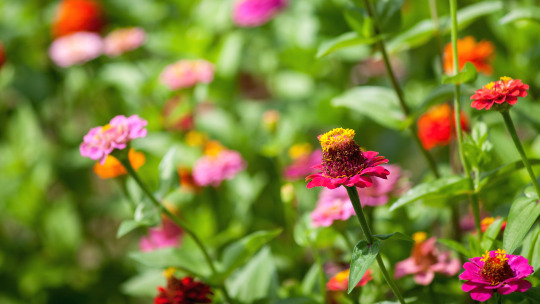
Flowery bokeh
I got up early in the morning and went to my vineyard, I've been working with my father. Starting early meant we finished early, so I had some free time to play around with my camera.
Here, Zinnia flowers in my mom's garden. July 2023.
Taken with Canon EOS 5D Mark II digital camera, with adapted Mamiya-Sekor C 150mm F4 telephoto medium format lens. This lens is SHARP! Crop to 16:9, levels, and that's it.
#IFTTT#Flickr#nature#bokeh#flowers#summer#sunny#colors#sharp#150mm#adaptedlens#july#2023#adapted lens#Canon#Mamiya#Canon EOS 5D Mark II#digital full frame#Mamiya-Sekor#Mamiya-Sekor C 150mm F4#short telephoto#wide-open#depth of field#Zinnia#zinnia elegans
3 notes
·
View notes
Text
Photography Tips for Capturing Stunning Wildlife Shots
Introduction
India, with its diverse and rich wildlife, is a dream destination for photographers seeking to capture the splendour of nature. From the dense jungles of Ranthambore National Park to the grasslands of Kaziranga, to the elusive snow leopards and red pandas found in the Himalayas, India offers a unique blend of landscapes that support some of the most iconic species on Earth, such as the Bengal tiger, Asiatic lion, Indian elephant, Snow Leopard, Wild Dogs, Red Panda and countless species of birds. The challenge, however, lies in capturing these majestic creatures in their natural habitat while respecting their environment. Whether you are a professional wildlife photographer or an enthusiastic amateur, mastering the art of wildlife photography is key to documenting these precious moments. In this blog, we will share essential photography tips for capturing stunning wildlife shots during your safari with Indian Wildlife Safaris.
Understanding the Basics of Wildlife Photography
Before you even step foot on a safari, it’s crucial to understand the basics of wildlife photography. The primary goal is to not only capture the subject but to also portray its behaviour, emotions, and natural surroundings.

Choose the Right GearWildlife photography demands the right equipment to ensure you are prepared for the varying conditions you'll encounter. A DSLR or mirrorless camera with a long telephoto lens (at least 200mm) is ideal for capturing distant animals without disturbing them. A 70-200mm or 100-400mm lens is great for medium-distance shots, while a 500mm or 600mm lens is perfect for close-up shots of wildlife from a distance. A tripod or monopod can stabilize your shots, and a good-quality camera bag will help protect your gear in rugged environments. Don’t forget to carry extra memory cards and batteries, as wildlife safaris can be long, and you'll be capturing numerous shots.
Know Your Camera SettingsWildlife photography often requires quick reflexes and adaptability. Understanding your camera's settings is essential for capturing fast-moving subjects. Set your camera to continuous autofocus (AI Servo or AF-C mode on Canon and Nikon respectively) to track moving animals. Aperture priority (A or Av) mode can help control the depth of field, allowing you to blur the background and isolate the subject. Set a fast shutter speed to freeze motion—usually 1/1000 or faster is ideal for moving wildlife. Additionally, use a higher ISO if you're shooting in low light conditions, but be mindful of noise in the image.
Understand LightingThe best light for wildlife photography is often found early in the morning or late in the afternoon. The soft golden light during these “golden hours” enhances the colours and textures of the animals and the landscape, making for more captivating shots. Midday light can be harsh, creating deep shadows and highlights that may not be flattering for your subject. During these times, try to shoot in shaded areas or use techniques like backlighting or silhouette photography to create dramatic effects.
Capturing the Essence of the Wildlife
Once you're out in the field, it’s time to start capturing the essence of the wildlife you encounter. This requires patience, skill, and a deep understanding of animal behaviour.
Be Patient and ObservantWildlife photography is as much about waiting for the right moment as it is about technical skill. Animals do not always appear on cue, and their behaviour can be unpredictable. Be patient and observe their movements. Pay attention to their surroundings and how they interact with the environment, as this can add context and meaning to your images. Sometimes, the most powerful photos are the quiet, candid moments, such as a mother tiger nurturing her cubs or a bird perched in the soft light.
Focus on the EyesIn wildlife photography, the eyes are often considered the window to the soul. A sharp focus on the eyes of your subject can create an emotional connection between the viewer and the animal. Whether it’s a tiger in the wild or a bird in flight, capturing sharp, expressive eyes will make your image more compelling. If possible, use a single autofocus point to ensure that the eyes are in focus while the rest of the animal and background naturally blur.
Capture the Behavior, Not Just the AnimalA striking portrait of an animal is fantastic, but capturing a subject in its natural behaviour is what makes wildlife photography truly special. Try to photograph animals engaging in their natural actions, such as hunting, feeding, or interacting with other members of their species. These moments tell a much richer story and offer insight into the animal’s life. For example, shooting a Bengal tiger in full stride as it moves through the grasslands tells a powerful story of power and grace. Similarly, capturing a family of elephants interacting can convey emotions of nurturing and social behaviour.
Use the Environment to Tell a StoryWhile focusing on the subject, don’t forget to include elements of the surrounding environment. The habitat plays an essential role in defining the species and its story. Whether it’s a lion lying in the shade of a tree in Gir Forest or a rhinoceros wallowing in the mud of Kaziranga, the environment adds context to your subject. It helps the viewer understand not just the animal, but the ecosystem that supports it.
Advanced Techniques for Creative Wildlife Photography
Once you have mastered the basics, you can start experimenting with more advanced techniques to add creativity and depth to your images.
Use Different Angles and PerspectivesWhile capturing wildlife from eye level is often preferred, don't hesitate to try different angles and perspectives. Shooting from a low angle can make an animal appear more majestic while shooting from above can provide a unique perspective of the surroundings. A bird’s-eye view of a herd of elephants or an up-close shot of a predator’s fangs can offer a fresh perspective and tell a new story.
Experiment with Motion BlurMotion blur can be a great tool to convey the energy and movement of wildlife. While it’s important to freeze motion in many wildlife shots, sometimes blurring the motion can help capture the speed and power of an animal. For example, a lion sprinting in pursuit of prey or birds flying in the wind can be beautifully captured with a slow shutter speed, creating a dynamic, ethereal effect.
Shoot in RAW Format
Shooting in RAW format is highly recommended for wildlife photographers, as it allows you to retain more detail and flexibility when editing your images. RAW files contain all the information captured by your camera’s sensor, giving you more control over exposure, colour correction, and sharpness during post-processing. This is especially useful when working in challenging lighting conditions or when you need to recover detail in the shadows and highlights.
Conclusion
Wildlife photography is both an art and a science, and the best images often come from a combination of preparation, technique, and an understanding of the subject. With the incredible wildlife of India at your fingertips, you have the opportunity to capture stunning shots that reflect the beauty and diversity of the country's natural heritage. Whether you’re tracking the elusive Bengal tiger in Ranthambore or capturing the majestic elephant herds in Kaziranga, the right approach and the best equipment will ensure you create images that are not only technically sound but also emotionally evocative.
By being patient, observant, and creative, you can make the most of your Indian Wildlife Safari and document the wilderness in all its glory. Remember that wildlife photography is not just about taking a picture—it’s about telling a story and preserving a moment in time for future generations to appreciate and protect. So, pack your camera gear, head out on your safari with Indian Wildlife Safaris, and start capturing the breathtaking moments that will stay with you forever.
0 notes
Text
Exploring Camera Bodies and Lenses in Traditional Photography
Photography is a fun and creative way to express yourself, and understanding your gear is essential for capturing the best shots. Whether you're diving into modern digital photography or exploring the timeless art of traditional photography, your camera body and lens play a crucial role in shaping the images you create. In this guide, we’ll examine various types of cameras and lenses, including those used in traditional photography, and how they work together to enhance your skills. Whether you’re just starting out or considering an upgrade, this guide will help you make informed choices to elevate your photography.
Camera Bodies
Before diving into lenses, it’s essential to have a basic understanding of camera bodies. The camera body serves as the foundation of your gear, playing a crucial role in how you capture images. Whether you're using a modern digital camera or embracing the charm of traditional photography, the camera body determines key aspects of your shooting experience and image quality.
DSLR Cameras (Digital Single-Lens Reflex)
DSLRs employ a mirror mechanism to direct light through an optical viewfinder, making them ideal for portrait, landscape, wildlife, and event photography.
Mirrorless Cameras
Mirrorless cameras lack a mirror and optical viewfinder, with light passing directly to the sensor and the image shown on an electronic viewfinder or the rear LCD screen. They are perfect for traditional photography, street photography, travel photography, and vlogging.
Point-and-Shoot Cameras
These are compact cameras with fixed lenses, often very easy to use, and designed for casual photographers. It is best for travel, casual photography, and those looking for convenience.
Medium Format Cameras
These cameras use larger image sensors than typical full-frame DSLRs or mirrorless cameras, producing higher resolution and dynamic range. It is best for studio photography, high-end fashion, and commercial work.
Camera Lenses
Prime Lenses
Lenses with a fixed focal length of 35mm, 50mm, or 85mm. It is best for portraits, street photography, and low-light situations.
Zoom Lenses
Lenses with a variable focal length of 24-70mm, 70-200mm. It is best for travel, events, and traditional photography.
Wide Angle Lenses
Lenses with a short focal length (typically under 35mm) that offer a wide field of view. It is best for landscape, real estate, and architecture photography.
Telephoto Lenses
Lenses with a long focal length (e.g., 70-200mm or 100-400mm). It is best for wildlife, sports, and portrait photography.
Macro Lenses
Lenses designed for extreme close-up photography of small subjects (e.g., insects, flowers). It is best for nature, product photography, and close-up shots.
Fisheye lenses
Ultra-wide-angle lenses that create a distinctive, curved perspective. It is best for artistic, architectural, and extreme sports photography.
0 notes
Text
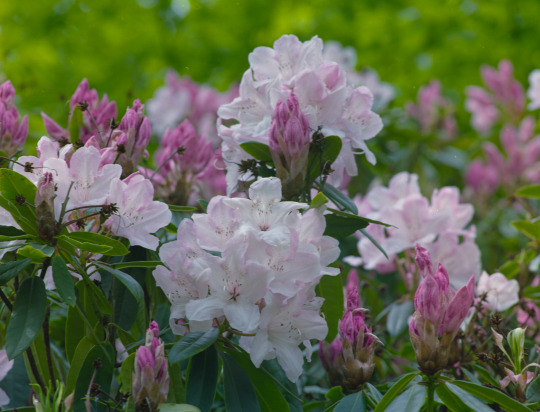
Bronica ETRS with Zenzanon 250mm f5.6 lens, shot on Kodak Portra 160
#photography#film photography#ishootfilm#analog photography#filmisnotdead#nature photography#colour photography#bronica etrs#etrs#telephoto#kodak portra 160#flower photography#flowers#plant photography#plants#medium format#120 film
6 notes
·
View notes
Text
Price: [price_with_discount] (as of [price_update_date] - Details) [ad_1] FUJIFILM X-T5 Mirrorless Camera (Black) A portable and powerful multimedia mirrorless camera, the FUJIFILM X-T5 features the newly developed 40MP APS-C X-Trans CMOS 5 HR BSI sensor for simply stunning results. Comparable in size to the original X-T1 and lighter than its predecessor, this camera provides a classic, dial-based layout and cutting-edge technology that includes a seven-stop in-body image stabilization system, Pixel Shift Multi-Shot mode for 160MP files, and action-freezing shutter speeds up to 1/180,000 sec from the electronic shutter. In addition to its versatile suite of stills capabilities, the X-T5 is also a highly capable moviemaking machine, recording up to 6.2K in 4:2:2 10-bit color internally or 12-bit ProRes RAW and Blackmagic RAW via HDMI. FUJIFILM XF 16-80mm f/4 R OIS WR Lens Well-suited for a wide variety of shooting situations, the FUJIFILM XF 16-80mm f/4 R OIS WR is a versatile 24-120mm-equivalent zoom, spanning wide-angle to medium-telephoto, and featuring a constant f/4 maximum aperture. Complementing this flexible design is an advanced optical layout, which includes a trio of aspherical elements and one ED aspherical element that help to minimize a variety of aberrations in order to produce high sharpness and clarity. A Super EBC coating also improves contrast and color neutrality by reducing flare and ghosting when working in strong lighting conditions. Also benefitting use in a variety of situations is a quick and quiet autofocus system along with a six stop-effective image stabilization system that minimizes the appearance of camera shake. Additionally, the lens is fully weather-sealed for working in inclement conditions. Batteries : 1 Lithium Ion batteries required. Is Discontinued By Manufacturer : No Product Dimensions : 8.8 x 7.8 x 7.8 cm; 950 g Date First Available : 9 January 2023 Manufacturer : FUJIFILM ASIN : B0BRY4T25X Item model number : 203400 Country of Origin : Japan Manufacturer : FUJIFILM, FUJIFILM INDIA PRIVATE LIMITED, Andheri East, Mumbai, Maharashtra-400069, For Support Mail- [email protected] contact- 0124-4325551 Packer : FUJIFILM INDIA PRIVATE LIMITED, Andheri East, Mumbai, Maharashtra-400069, For Support Mail- [email protected] contact- 0124-4325551 Importer : FUJIFILM INDIA PRIVATE LIMITED, Andheri East, Mumbai, Maharashtra-400069, For Support Mail- [email protected] contact- 0124-4325551
Item Weight : 950 g Item Dimensions LxWxH : 8.8 x 7.8 x 7.8 Centimeters Net Quantity : 1 Count Included Components : Camera Kit Generic Name : Mirrorless Camera with Lens The high-resolution 40.2MP X-Trans CMOS 5 HR sensor has an enhanced image – processing algorithm that boosts resolution without compromising the signal-to-noise ratio, delivering astonishing image quality. 20 Film Simulation modes inside of X-T5 digitally replicate the look of the classic photographic film stocks developed by Fujifilm for over 85 years. Reproduce the classic colors and tones that Fujifilm are known for. X-T5 is packed with many features such as pixel shift which give 160mp image after compiling Shift Multi-Shot|fastest shutter - 1/180000|2x digital teleconverter for photo|wireless tethering|camera to cloud with frame.io|touchtracking and dial operation for photo and video|quick lever to switch from photo to video or otherwise. 6.2K movies can be recorded internally at 30p in 4:2:2 10-bit color, delivering high-definition footage with rich color detail. In addition, you can record 4k 60fps and FHD 240fps. X-T5 is packed with many features such as AI deep learning|high resolution viewfinder|touchtracking|3-way tilting lcd|switch for change focus from single to continuous|intelligent hybrid ai af|micro hdmi type d| dual card slot (dual sdxc uhs-2)|740 frames battery life (cipa standard)|can run on power back (type -c) which makes it perfect hybrid camera for photo and video. X-T5 is a high resolution professional camera suits for every occasion and need be it wedding|fashion|portrait|landscape|wildlife|commercial|filmmaking|documentary|street|travel|lifestyle [ad_2]
0 notes
Text
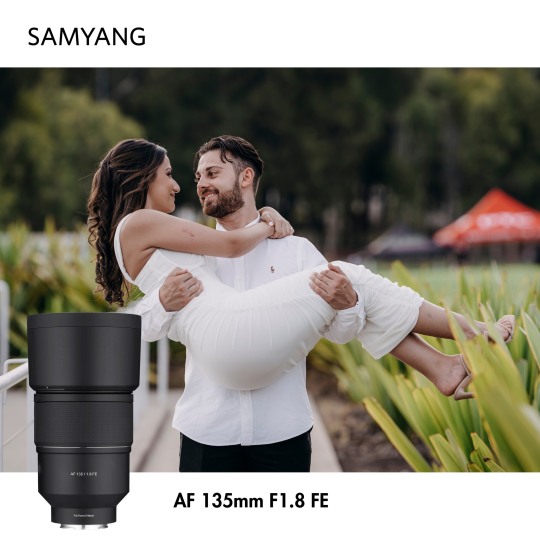
Designed for portraiture, landscapes, and astrophotography, the AF 135mm f/1.8 FE from LK Samyang is a medium-length telephoto prime designed for full-frame Sony E-mount mirrorless cameras. Offering outstanding resolution, the optical design incorporates three extra-low dispersion elements and an ultra-precision aspherical element, which suppresses both chromatic and spherical aberrations for improved sharpness, color accuracy, and clarity. An ultra multicoating has also been applied to reduce ghosting and flare in order to achieve higher contrast when working in strong lighting conditions.
0 notes
Text
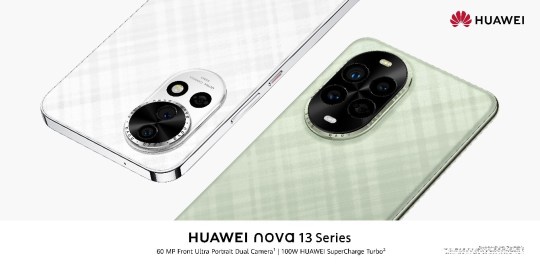
Huawei debuts the all-new HUAWEI nova 13 Series during the Dubai HUAWEI Flagship Product Launch on December 12th 2024. Pioneering the new Dynamic Plaid Texture Design, multi-focal portrait capabilities, AI-driven innovations, HUAWEI nova 13 Series ushers in a fresh wave of trends while embodying the creative spirit of the younger generation. The HUAWEI nova 13 Series introduces a bold leap in design through the interplay of plaid patterns. Staying true to its fashion-forward, minimalist aesthetic, the HUAWEI nova 13 Series brings plaid from clothing and accessories into the world of handheld design, crafting a play of light and shadow. Featuring nano-level precision in the Dynamic Plaid Texture Design, it combines bold, tech-inspired sophistication with a modern touch. The pattern's shading shifts subtly with viewing angles, adding a dynamic visual appeal. The back cover is crafted with a unique upgraded Star Effect finishing, offering a silky satin-like texture that's irresistibly smooth and comfortable to hold. Launching with Loden Green as the flagship colourway, it embodies a lifestyle of ease, spontaneity, and individuality, breaking free from convention. This low-saturation, warm shade is understated yet lively, encouraging a return to self, inviting users to embrace life's realest moments. White and Black colourways are also available, bringing timeless colours that are bound to leave lasting impressions. As a defining fashion element of the nova Series, HUAWEI nova 13 Series elevates its signature Super Star Orbit Ring camera design with a sharper, more refined aesthetic for added sophistication. The 5D glass structure on the back panel enhances the tactile experience while visually minimising the camera's height, creating a sleek, seamless look. HUAWEI nova 13 Series Portrait Powerhouse: Capture Every Moment Freely HUAWEI nova 13 Series debuts the AI Best Expression feature. Whether capturing moments with a single person or a group, this tool optimises each expression, scanning through burst shots to allow users to pick out their most natural and lovable expressions from multiple burst shots and adapt it to the best photo composition. AI Best Expression highlights your best self, perfectly capturing cherished moments to be treasured forever. For the first time, HUAWEI nova 13 Series brings support for multi-focal portrait capabilities for both front and rear cameras, delivering portrait shots with a richly artistic atmosphere. HUAWEI nova 13 Pro introduces an upgraded 50 MP Adjustable Aperture Camera with a variable aperture range of F1.4 to F4.0. This intelligent aperture system can recognise scenes and adjust settings accordingly to help users capture stunning moments. Equipped with Optical Image Stabilisation (OIS), the camera improves light sensitivity for clearer results in low-light conditions. Additionally, the 3X Optical Zoom Telephoto Portrait Camera with OIS provides versatile zoom options, perfect for medium to long-distance portrait shots. This allows for detailed, sharp images while maintaining a clean and visually striking composition, whether capturing close-ups or scenic backgrounds. EMUI 14.2: Intelligent, Safe and Efficient Powered by EMUI 14.2, HUAWEI nova 13 Series brings fun, intelligent, safe and efficient device experience for users. With the enhanced, HUAWEI Themes, users can use Symbol Stickers to add cut-out images from your Gallery as stickers into a thematic background, allowing creativity to soar. Using emojis, users can use Emoji Stickers to create their own personalised backgrounds. The home screen also supports personalised Symbol Stickers, giving users a richer canvas for self-expression. Huawei has always considered cyber security and privacy protection as top priority, offering enhanced transparency and control over app permissions and device security status. Support for app tracking management and key control points during app installation and operation adds an extra layer of protection for users. Powerful 100 W HUAWEI SuperCharge Turbo HUAWEI nova 13 Series addresses power needs with the new 100 W HUAWEI SuperCharge Turbo with AI Precision Temperature Control for stable power output, resulting in HUAWEI nova 13 Pro being able to charge to 50% in just 9 minutes, and the HUAWEI nova 13 reaching 50% in 10 minutes, providing a smooth and convenient user experience. HUAWEI nova 13 Series houses a 5000mAh Large Battery, while maintaining a sleek and lightweight body. All-New Dynamic True-Colour Display with 120Hz LTPO With the new Dynamic True-Colour Display, HUAWEI nova 13 Series comes with AI HDR that combines HDR technology with AI algorithms to automatically recognise scenes, results in clearer details in both highlights and shadows, more vivid colours, and a bright, transparent visual experience that enhances the artistic appeal and viewing pleasure of each image. To ensure ease of viewing of display during dimly lit scenarios, HUAWEI nova 13 Series offers an advanced AI Eye Comfort Display, enhancing the eye-care experience from multiple angles. By intelligently sensing ambient lighting, recognising image content, and controlling blue light levels, it ensures a more comfortable and strain-free viewing experience, adapting to the user's environment for optimal eye care. HUAWEI nova 13 Pro features a 120Hz LTPO Adaptive Display, offering smooth, power-efficient performance with dynamic refresh rate adjustments tailored to your needs. The Always-On Display (AOD) provides a quick glance at essential information, while Splash Touch & Touch Optimisation ensures smooth, accurate interaction, even on wet screens. Read the full article
0 notes